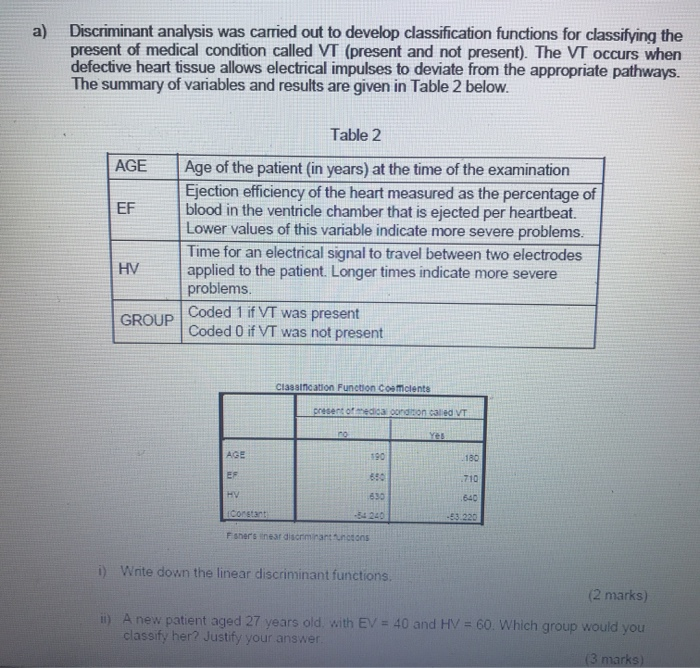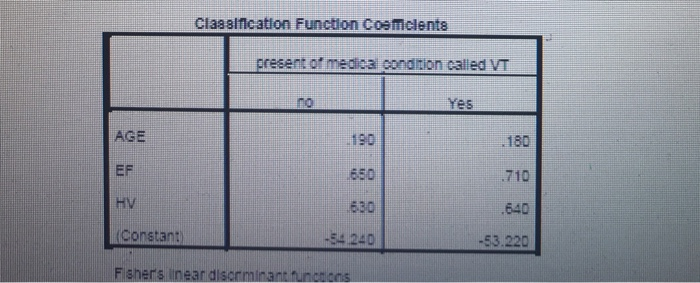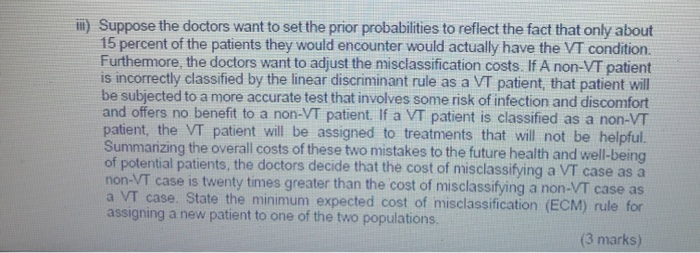HELP ME SOLVE iii plss

a) Discriminant analysis was carried out to develop classification functions for classifying the present of medical condition called VT (present and not present). The VT occurs when defective heart tissue allows electrical impulses to deviate from the appropriate pathways. The summary of variables and results are given in Table 2 below. Table 2 AGE EF Age of the patient (in years) at the time of the examination Ejection efficiency of the heart measured as the percentage of blood in the ventricle chamber that is ejected per heartbeat. Lower values of this variable indicate more severe problems. Time for an electrical signal to travel between two electrodes applied to the patient. Longer times indicate more severe problems Coded 1 if VT was present Coded O if VT was not present HV GROUP Classification Function Comclents present offedida oond son called VT AGE 190 180 EF .710 HV 630 640 Constant -3.220 Fsher's near discriminatrons i) Write down the linear discriminant functions. (2 marks) ii) A new patient aged 27 years old with EV = 40 and HV = 60. Which group would you classify her? Justify your answer. (3 marks) Classification Function Coemclents present ofmediea condition called VT AGE 190 180 EF 650 .710 HV 630 .640 (Constant -54 240 -53.220 Fisher's linear disorminant functions ii) Suppose the doctors want to set the prior probabilities to reflect the fact that only about 15 percent of the patients they would encounter would actually have the VT condition. Furthermore, the doctors want to adjust the misclassification costs. If A non-VT patient is incorrectly classified by the linear discriminant rule as a VT patient, that patient will be subjected to a more accurate test that involves some risk of infection and discomfort and offers no benefit to a non-VT patient. If a VT patient is classified as a non-VT patient, the VT patient will be assigned to treatments that will not be helpful. Summarizing the overall costs of these two mistakes to the future health and well-being of potential patients, the doctors decide that the cost of misclassifying a VT case as a non-VT case is twenty times greater than the cost of misclassifying a non-VT case as a VT case. State the minimum expected cost of misclassification (ECM) rule for assigning a new patient to one of the two populations










